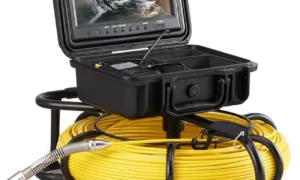Starting a new job can be stressful enough in itself, so when you’re required to do it all remotely, the first-day jitters might become overwhelming. With large numbers of businesses switching to working at home during the COVID-19 pandemic, lots of fresh hires are finding they’re having to interview, meet colleagues and bosses, and build working relationships all online.
If you are lucky enough to have secured a role during this upheaval, congratulations. So how to ensure the first days, induction, and settling in go as smoothly as possible, even if there’s no face-to-face contact with the team? These useful pointers from people who’ve started their jobs remotely could help.
Remote orientations
Before the pandemic struck, most people probably took for granted the initial meet-and-greet with the team along with a tour of the workplace. When fresh hires and their employers have to do it all virtually, however, it becomes a completely different process.
A potential lack of boundaries between the private and professional might be of concern. However, this could be the very thing that helps break the ice. As Nicole Rouwenhorst of Manchester marketing firm Social recalls, domestic interruptions ended up helping her get to know her 40 colleagues better. Examples like delivery at the door during video calls can actually facilitate everyone getting to know each other. So can things like dogs, cats, or even babies wandering into the room.
Rouwenhorst noted she had doubts about building successful work relationships through virtual channels, but it turned out fine. She suggests it can be easier to get acquainted precisely because the whole group is in their own natural home environment. In this way, video calls could be an improvement on face-to-face meets on site.
Whilst she was initially concerned about social isolation, especially since she lives alone in a one-bedroom flat, she’s found enjoyable activities have helped her keep up her spirits. She and her team members play games using Facebook’s platform Workplace. Using hashtags like #showusyourstation and #guessthelocation, everyone gets in the teambuilding mood by showing a photo on display and inviting everyone to guess where it is placed in the house.
Events like ChinaJoy, which drew nearly 400,000 attendees to its annual conference last year, created online experiences to counter the feeling of isolation. Events are frequently used to meet employers and partners, but that has been difficult with the cancellation events. Utilizing technology from Cocos, ChinaJoy offered different virtual pavilions where users could gather and visit exhibitors. In this way, attendees could participate in in-depth interaction, try games, receive gift packages, participate in competitions and interact with others, networking with
Annelies Harte, Leisure Club Manager at the Audley Nightingale Palace, had a similar experience. She and 21 others started at the newly opened South London retirement village in the midst of the pandemic, and all staff had to meet, get to know each other, and start work remotely at the same time. For Harte, it was a treasure hunt that gave her a sense of belonging. The group was split into squads and given riddles and clues about random household items. These prompted people to find things like garlic crushers, shoe horns, and egg cups. As she says, the teambuilding exercise worked because it was interactive and showed each person’s personality.
Virtual inductions
Harte cautions louder people to tend to dominate since video calling platforms give priority to their voices. She says it’s a good idea to use other tools like online breakout rooms so you can have sessions with smaller numbers of people.
She surmises her fully virtual induction turned out well and she ended up bonding more effectively with others than she’d expected to. Generally speaking, asking questions and taking a proactive approach to getting to know your coworkers are always useful when commencing a job.
Employers needing to onboard online could benefit from taking a few pointers from Rosie Evans, the behavioral scientist at CoachHub. Evans says for many, the experience can be highly disorientating and daunting. More structure and additional support can assist those starting with developing the social connections they need.
Henry Moffett at marketing consultancy HeyHuman recently commenced in a role. He says by adapting his behavior, he was able to overcome drawbacks like the stress of constantly seeing your face relayed back to you and lack of nuances compared with physical meetings. Taking mental breaks by turning off video for informal calls has been a help also.
Final remarks
As companies continue to implement at-home work arrangements to combat the spread of COVID-19, new employees might have no option but to embrace virtual onboarding the best they can. Once you get the offer, contact HR and find out as much as you can about the induction process so you know what to expect.
Stay flexible, patient, and don’t be afraid to reach out with questions. Clarify anything you need to with your manager, and work out your direct report’s preferred channels or modes of contact, whether that’s email or chat. It’s also essential to learn how your colleagues prefer to communicate. Finally, be okay with being uncomfortable as this feeling is natural when you’re starting a new role.



































